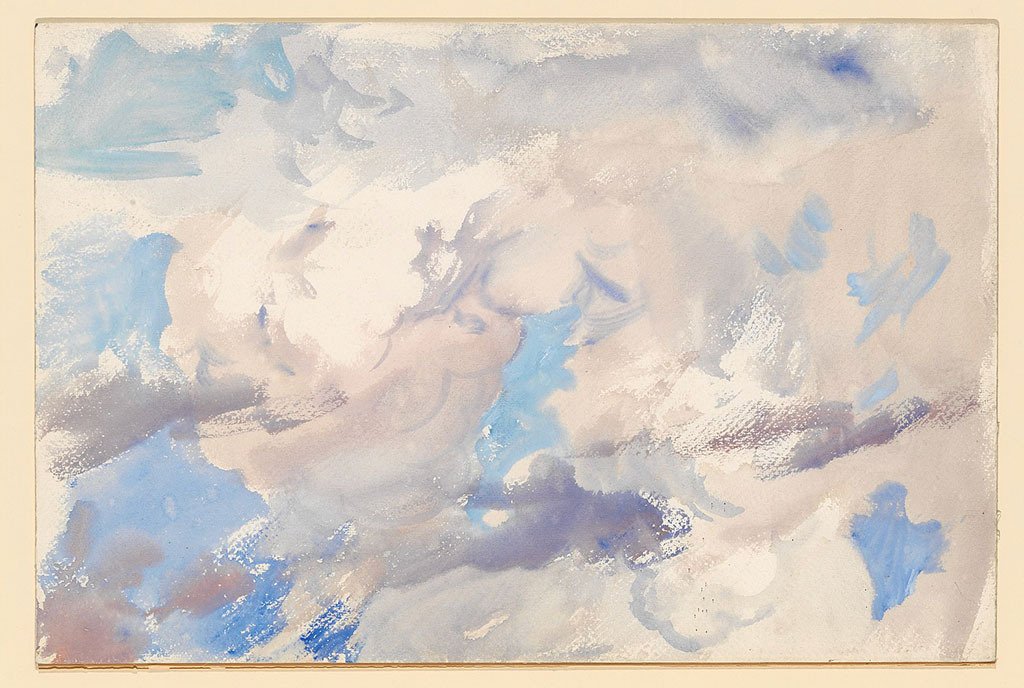
In one image, pastel skies above an ocean, still and calm. In another, the sun radiates in the center of a deep blue sky. These were paintings at the C. Parker Gallery of Greenwich, CT, part of an exhibit titled Blue Skies: Now More Than Ever. Six artists’ works in various styles were shown at the exhibit, where all the paintings were images of clear skies: blue skies, skies at sunset and sunrise, skies without pollution clouds or wildfire smoke, skies to remind us of the importance of clean air.
Timed to coincide with International Day of Clean Air for Blue Skies, an initiative of the United Nations, the opening of the exhibit featured speeches from Jamil Ahmad of the UN, along with nonprofit leaders from Connecticut Working Together for Clean Air, the Greenwich Conservation Commission, the Greenwich Sustainability Committee, the Greenwich Tree Conservancy, the Greenwich Land Trust, and Greenwich Green & Clean.
The exhibit highlighted “artists who harness the power of art to raise awareness about our environment,” according to Fred Camillo, the first selectman of Greenwich. The town partnered with the gallery on the program, which included environmental-themed events lasting through October 2023.
“These artworks celebrate the expanse above us, from cerulean mornings to indigo evenings,” Tiffany Benincasa, the owner and curator of the gallery said. “Each canvas tells a story of hope, resilience, and the potential for change, reminding us of the optimism that comes with every new day.”
But can visual art reflecting the natural world prompt people to care about climate change and, even more importantly, take action? And how can nonprofits harness the power of art?
The Art and the Science Behind It
A study from 2023 found that “using art to convey environmental data eased political perceptions about climate change,” according to Hyperallergic. Researchers at the University of Wisconsin and the nonprofit EcoAgriculture Partners surveyed almost 700 people, asking them to consider both the Keeling Curve, a graph that shows the carbon dioxide in the atmosphere, and a piece of art by Diane Burko.
The artwork was a large, mixed media piece titled SUMMER HEAT, I and II, which Burko created in response to the deadly heat wave of 2019, which killed over a thousand people in France. The piece is also “an abstraction of the Keeling Curve,” according to the PBS station WHYY. It’s huge, with splashes of red and dark blue dripping across two canvases, dark mountains, and images of Earth’s continents in the background. In a corner of one of the canvases, the Keeling Curve itself can be seen.
Changing people’s hearts about climate change is a beginning point—and could lead to changing their minds.
The authors of the study, published in the journal Communications Earth & Environment, wanted to see how people responded to the scientific visualization of air pollution versus the artistic rendering. As reported by Hyperallergic, “the researchers discovered that participants perceived Burko’s artwork to be just as credible as the standalone graph.” And importantly: “People also felt more positive emotions when they saw ‘SUMMER HEAT, I and II’ than when they saw the Keeling Curve alone.”
Art elicits an emotional response, which can disarm people—and impact them. As “emotion changes the way people think about climate change,” the researchers also wanted to know: “Would people be less politically polarized about climate change when they looked at and thought about Burko’s artwork than when they looked at the Keeling Curve?”
Research participants “on both ends of the political spectrum moved toward the middle” after viewing the art in the study. But the study found that climate-focused art only impacted participants’ feelings. “Simply looking at ‘SUMMER HEAT, I and II’ did not change viewers’ ideas about climate change,” according to the study.
Sign up for our free newsletters
Subscribe to NPQ's newsletters to have our top stories delivered directly to your inbox.
By signing up, you agree to our privacy policy and terms of use, and to receive messages from NPQ and our partners.
Art That Offers Solutions
Still, changing people’s hearts about climate change is a beginning point—and could lead to changing their minds. More and more nonprofits are tapping into these emotions, harnessing the power of art to deliver the message and the urgency of climate justice.
“Art raises awareness, sometimes through courting controversy,” The Revelator wrote in 2023, citing the recent trend of climate activists attacking respected artworks in museums. Activists from groups like Just Stop Oil and Extinction Rebellion have made national headlines for actions like throwing soup across Vincent van Gogh’s Sunflowers or mashed potatoes on a painting by Claude Monet.
“After all, activists reason, what will the value of art be in the future if you can’t even eat?” Artnet wrote in a 2022 article about the art protests. But to the general public, actions like the perceived destruction of famous paintings—which are mostly protected by glass coverings—“seemed bizarre and pointless, with no obvious message about the climate crisis,” according to TIME. “Who was the target? Van Gogh? Oil paintings (get it)? From a communications standpoint, the protest seemed like an even bigger mess than the soup-splattered painting.”
The first square of the [Climate] Quilt reads in sewn thread: “THIS COULD WORK!”
More effective messaging to prompt a general audience to care about the climate crisis might take the form of creation rather than perceived destruction, of hope rather than despair. “It’s art that offers solutions, and artworks that emphasize the beauty and interconnectedness of nature, that have the most emotional and cognitive impact on viewers to encourage climate action,” according to The Revelator.
The New York-based Climate Museum, the first museum in the United States devoted to the climate crisis, currently features a colorful 45-foot mural by NAACP Image Award winner R. Gregory Christie conceptualizing the transition to climate justice. The museum’s rotating slate of exhibits also presently includes interactive maps on the connection between climate and equity. Artworks for Change, which launches art exhibits globally focused on climate and social justice, has installations in three states on sustainable housing and survival architecture. And Australia’s Climarte creates and sponsors posters, festivals, and rotating exhibits. One of their current projects is called The Climate Quilt. The first square of the quilt reads in sewn thread: “THIS COULD WORK!”
“By leveraging our place of influence, we can encourage each individual to add their voice and collectively we can make a difference.”
A Creative Call to Action
Even nonprofits not solely focused on art are finding ways to incorporate visual creativity into their environmental missions and messaging. In 2023, the Massachusetts Clean Energy Center awarded a sizeable grant to the planned collaboration between Western Mass arts and culture nonprofits and UMass Amherst Extension. NPQ reported on Creative Wildfire, which uses art to inspire and conceptualize the transition away from an extractive economy. And in 2023, NPQ devoted our fall print issue to climate fiction, publishing short stories focused on issues of climate. As NPQ wrote, “It’s possible art can do the unthinkable, reach the unreachable. All art has the power to make change.”
When it comes to visual art, images of a restored world, a changed world, or even a new world can inspire both hope and action. As Art Daily wrote about Rick Garcia, an artist in the Blue Skies: Now More Than Ever exhibit, his artwork “ignites a sense of purpose and invites viewers to join hands in safeguarding the skies above us. His art captures the essence of optimism.” The gallery’s Benincasa described the clean air art as “a call to action to support the United Nations Clean Air initiative. By leveraging our place of influence, we can encourage each individual to add their voice and collectively we can make a difference.”











